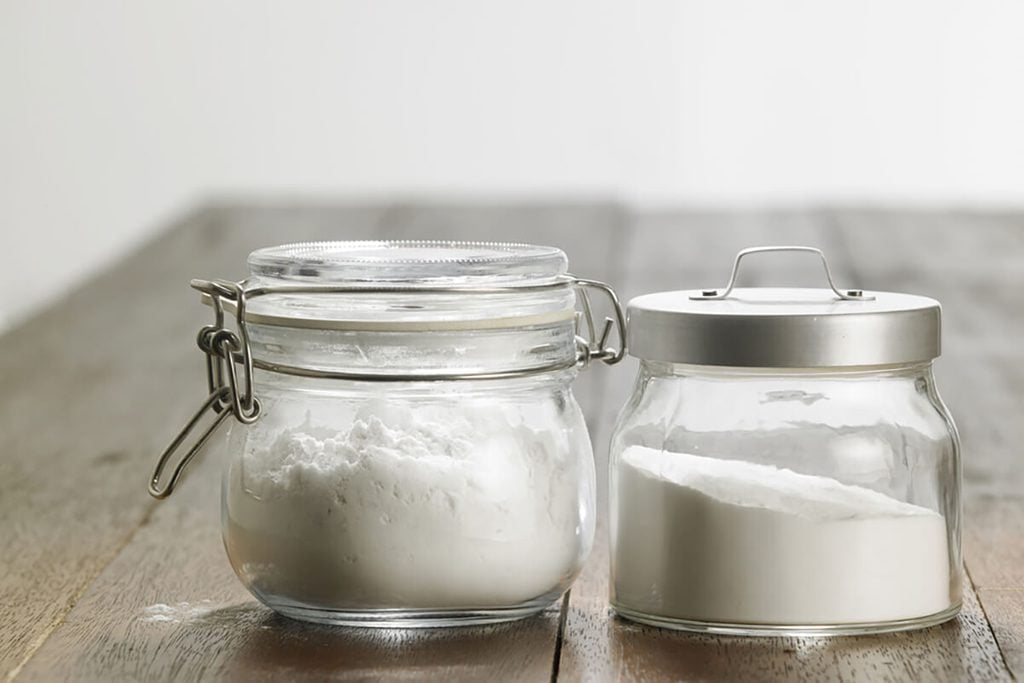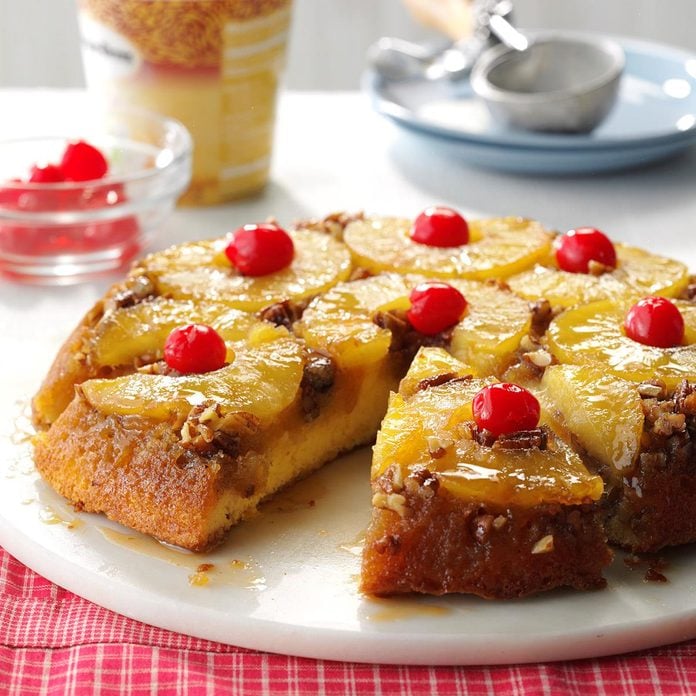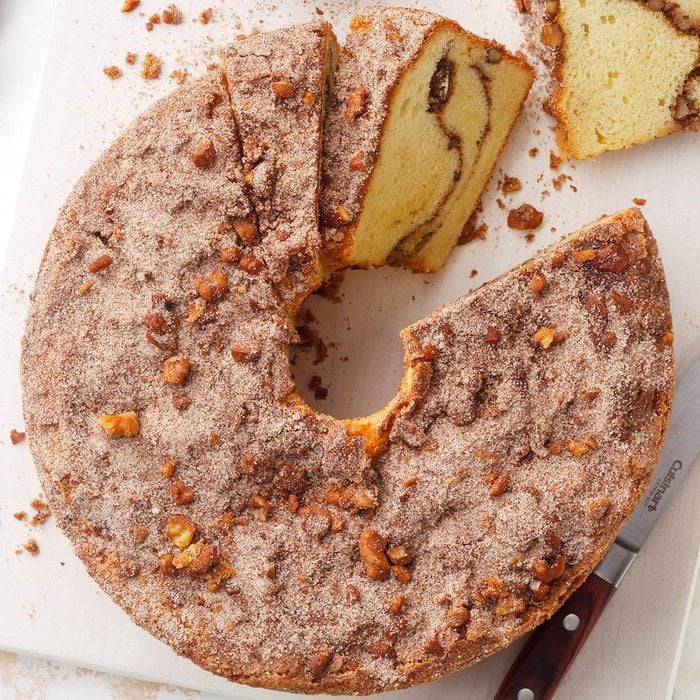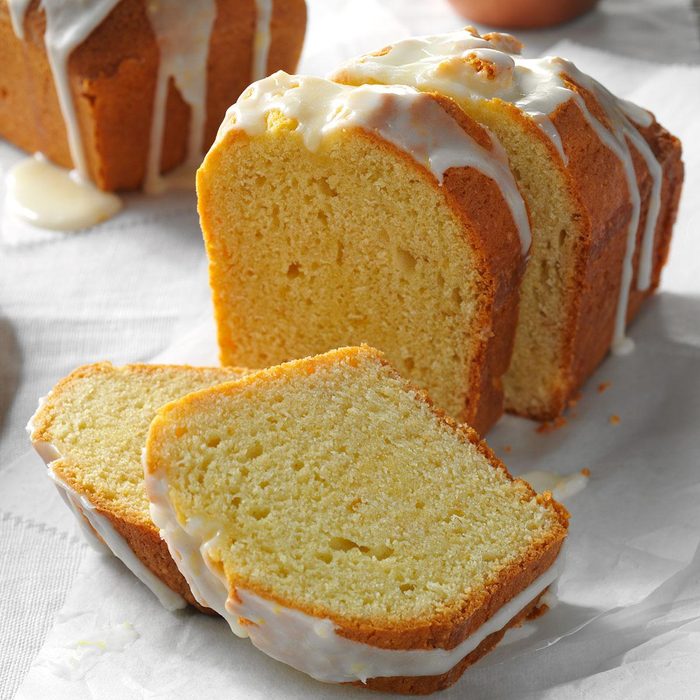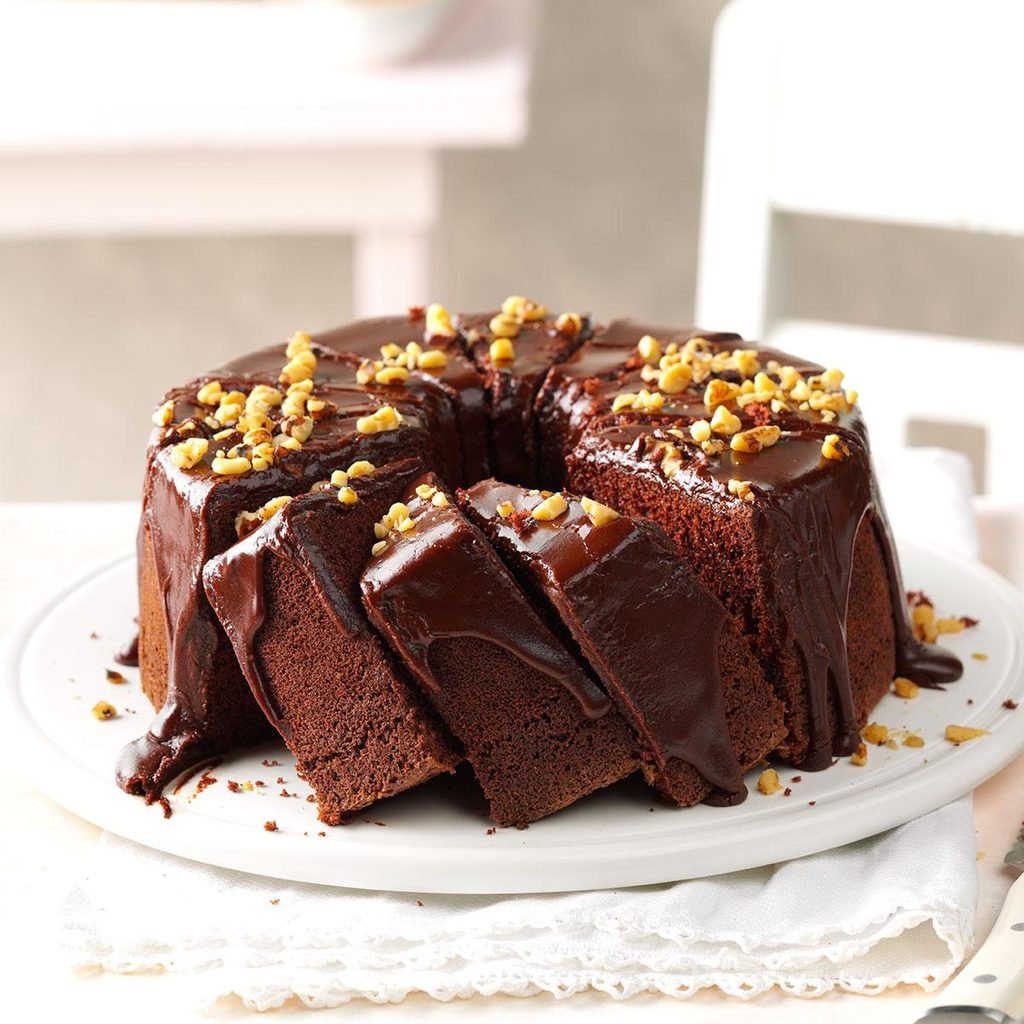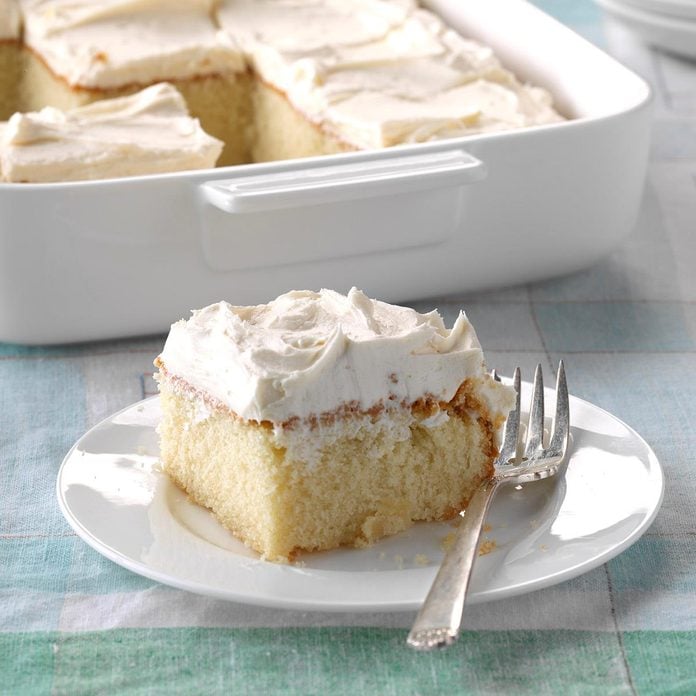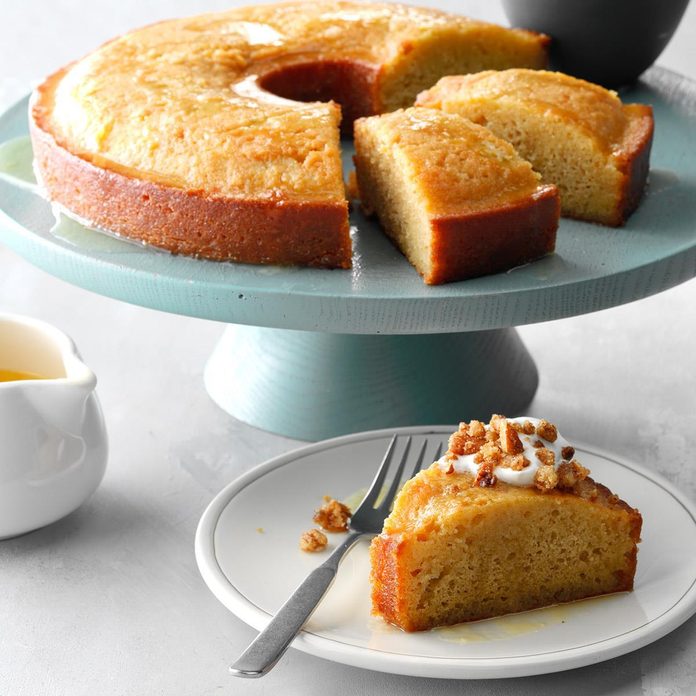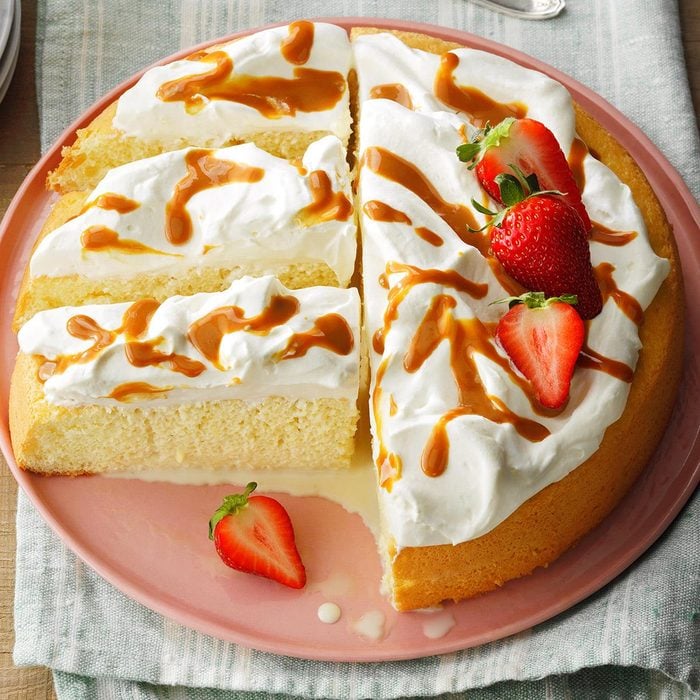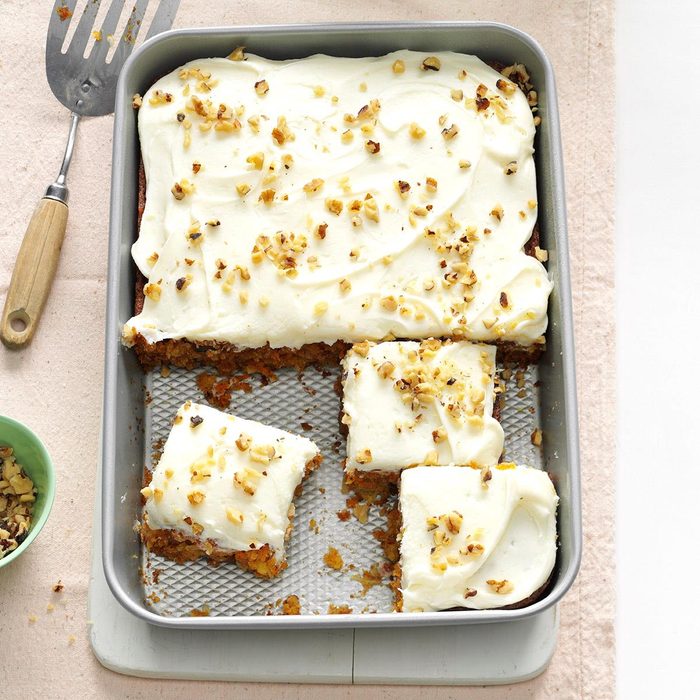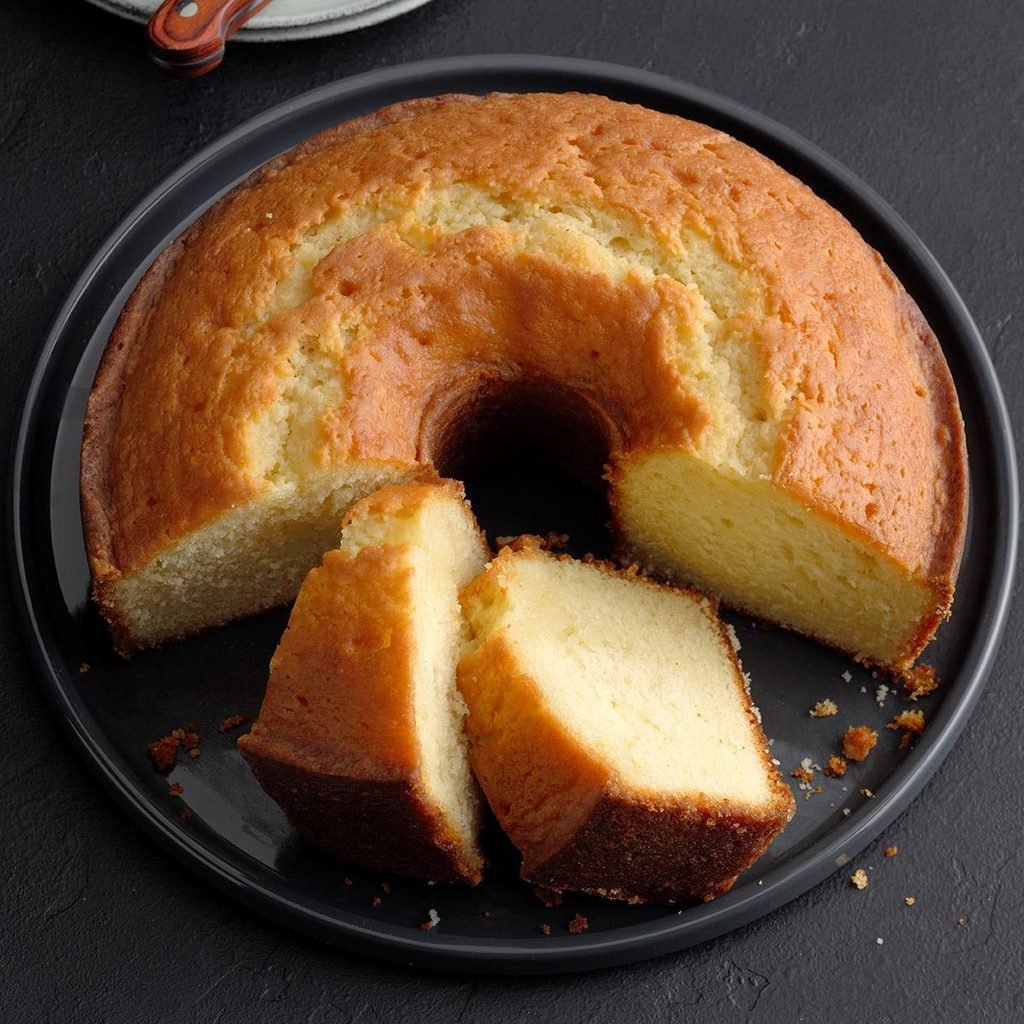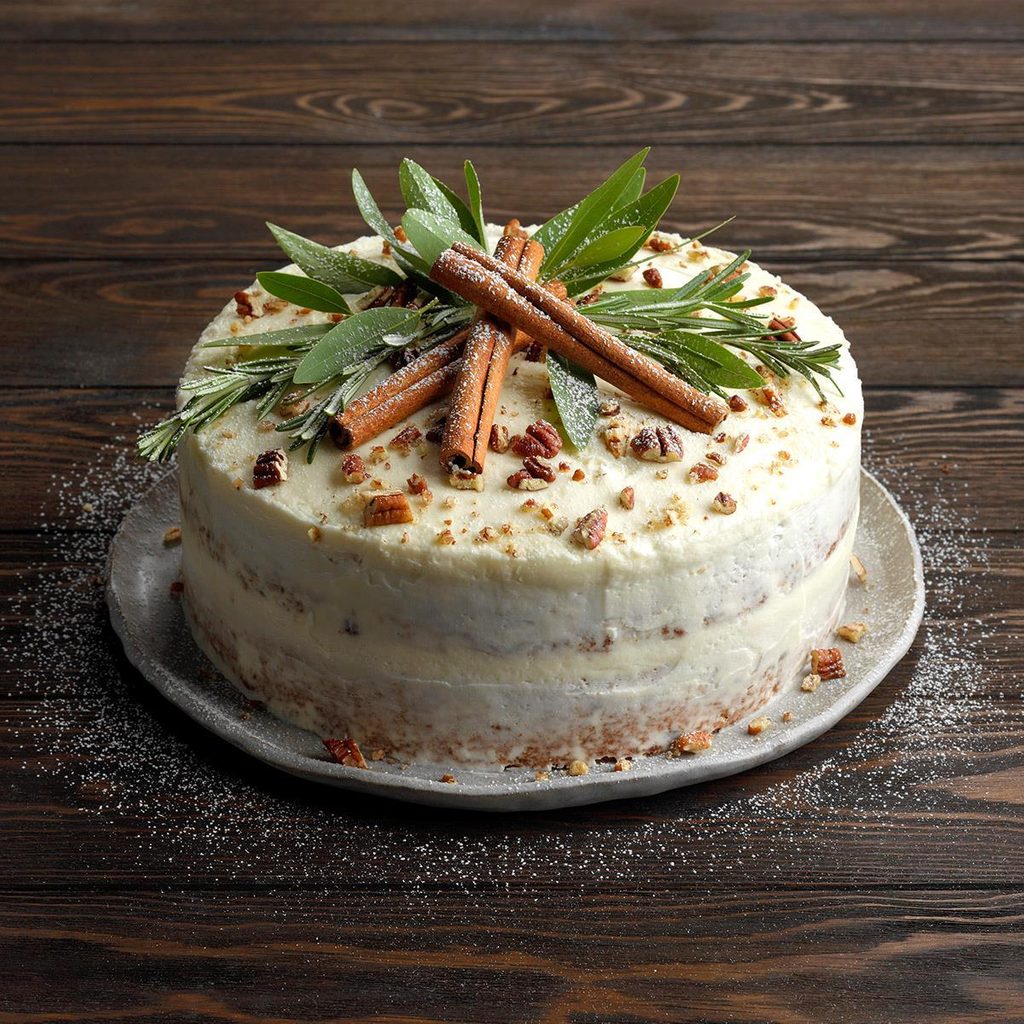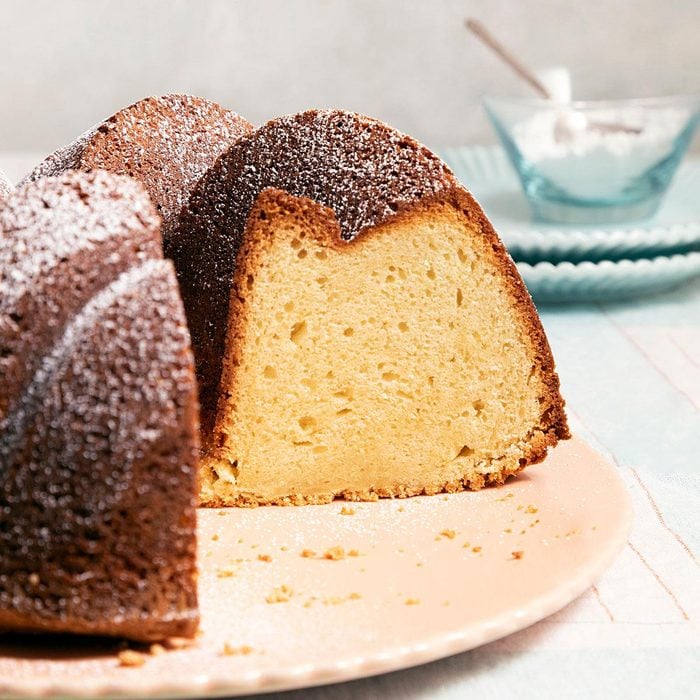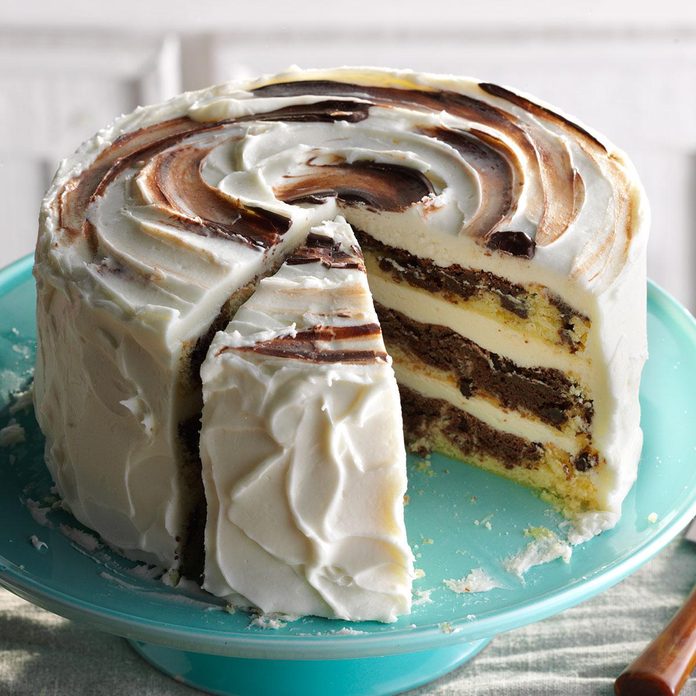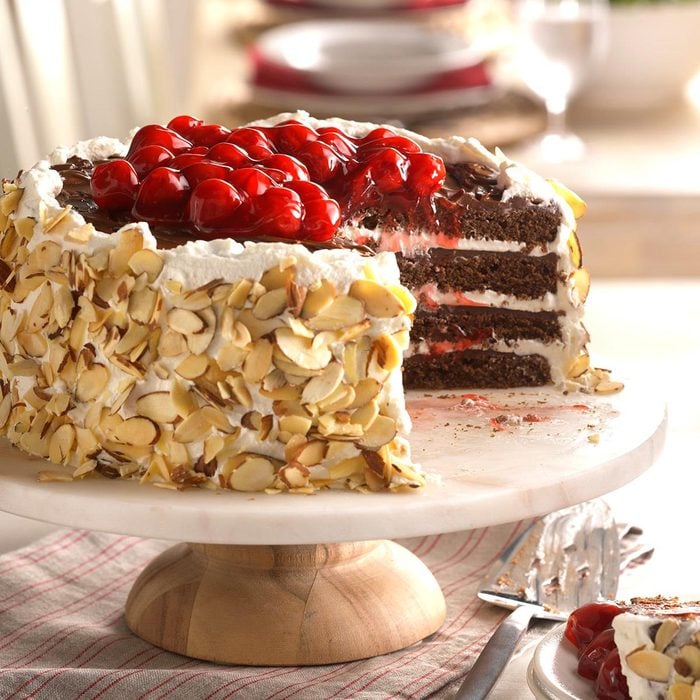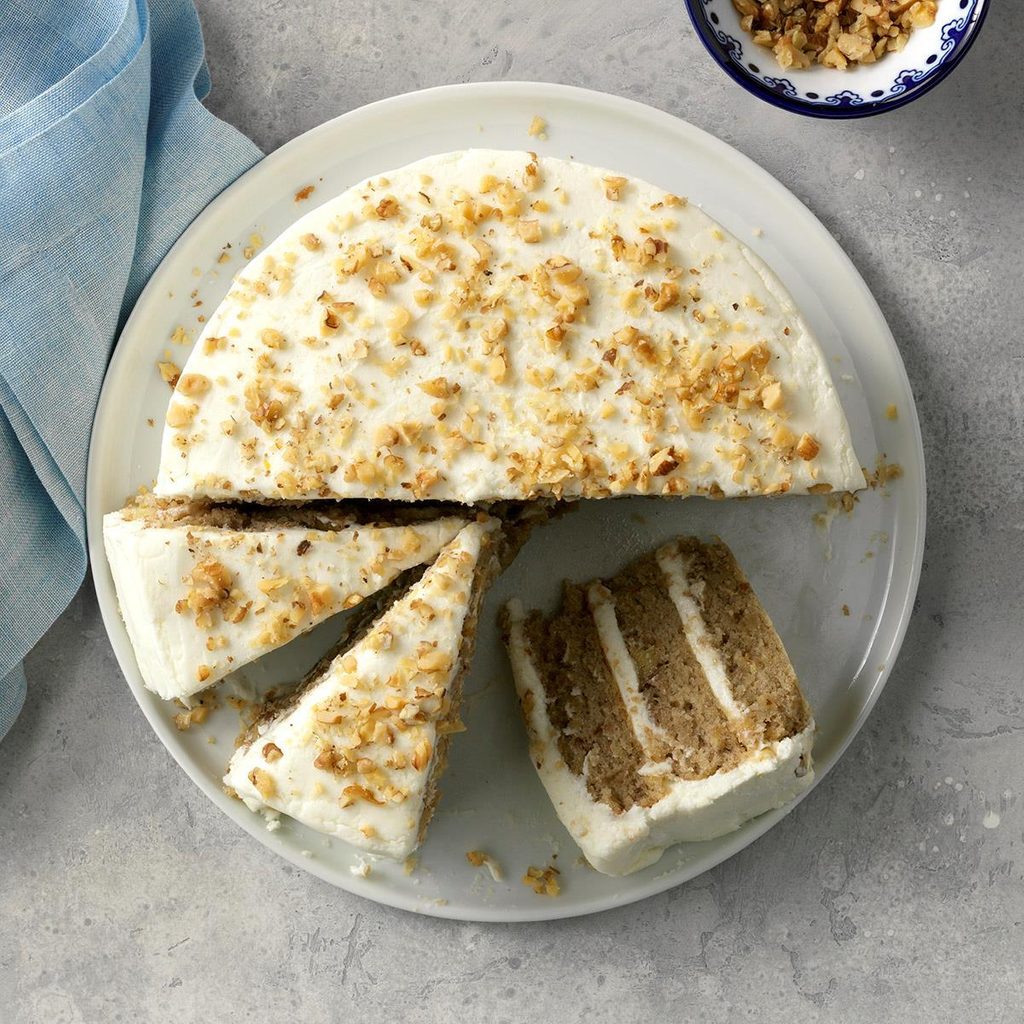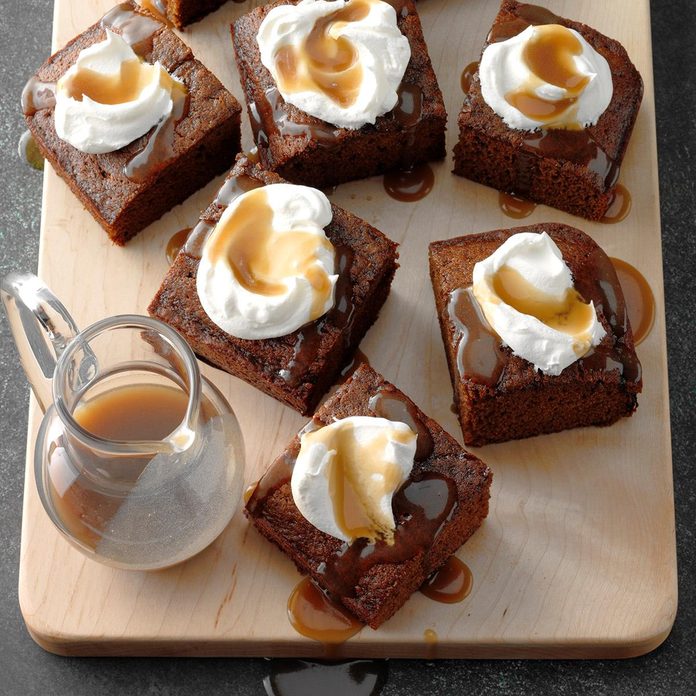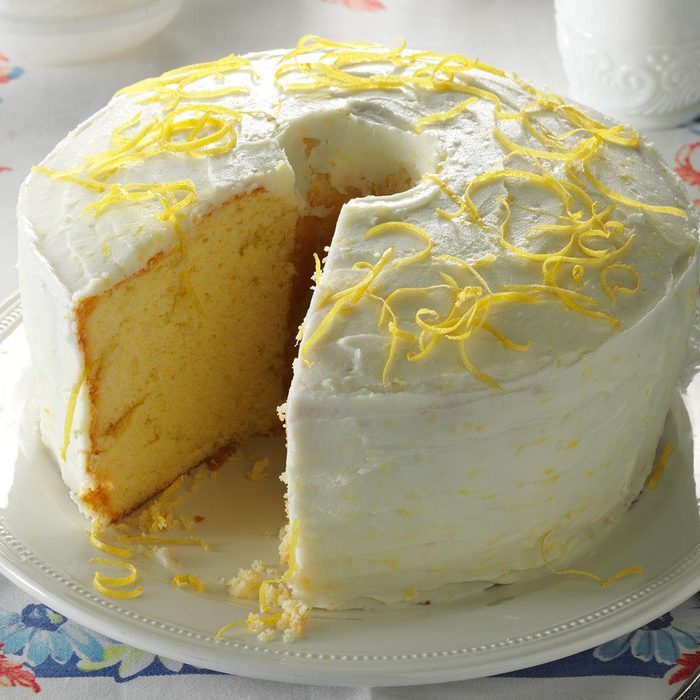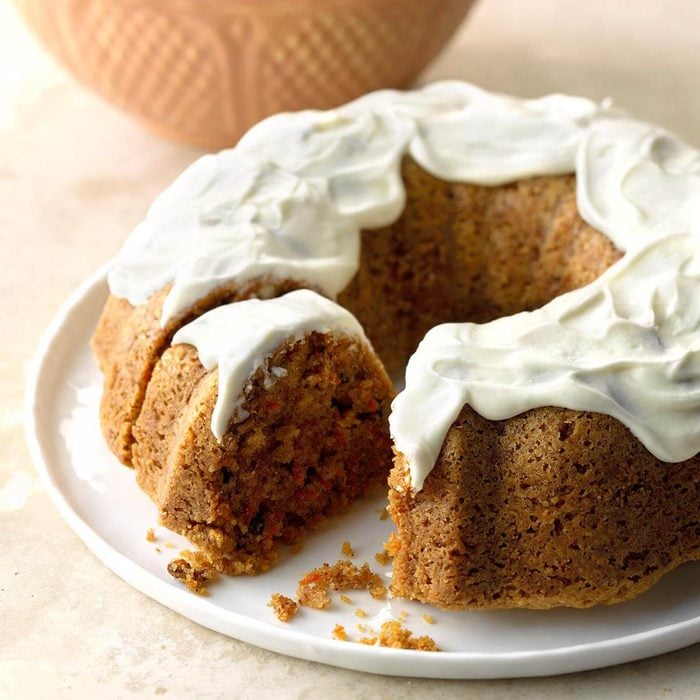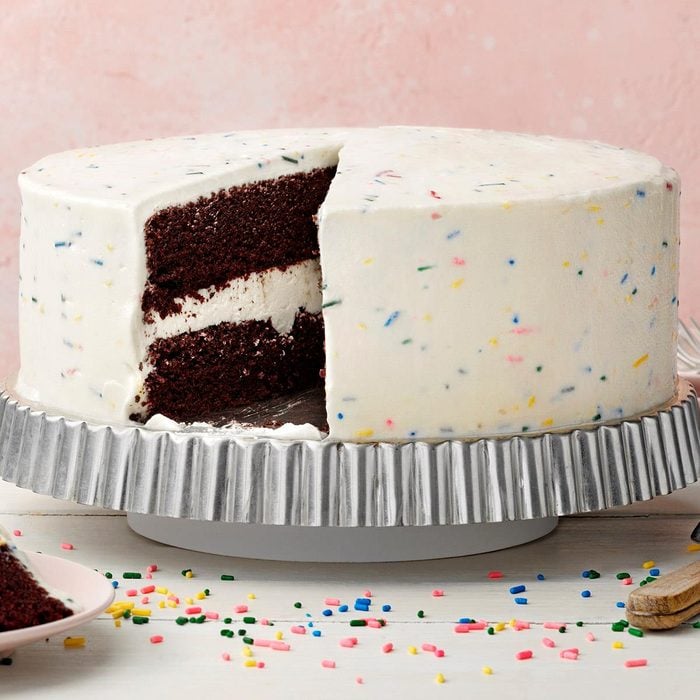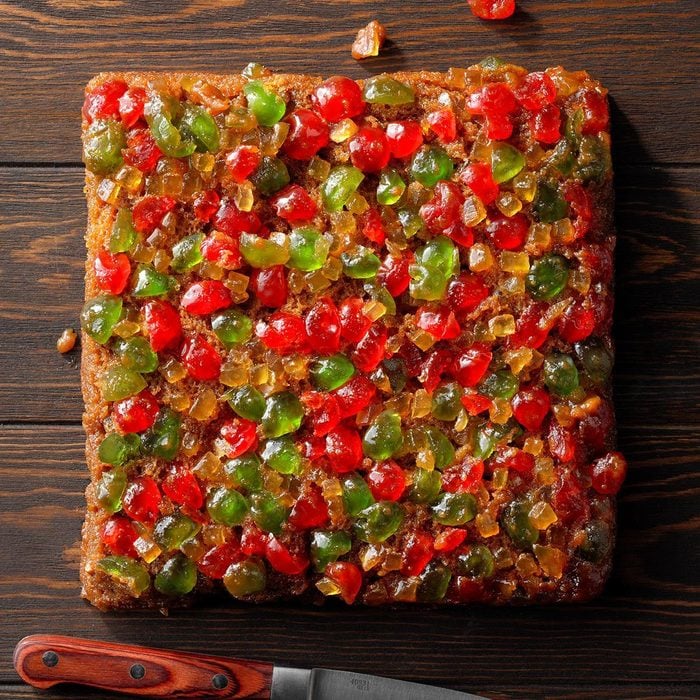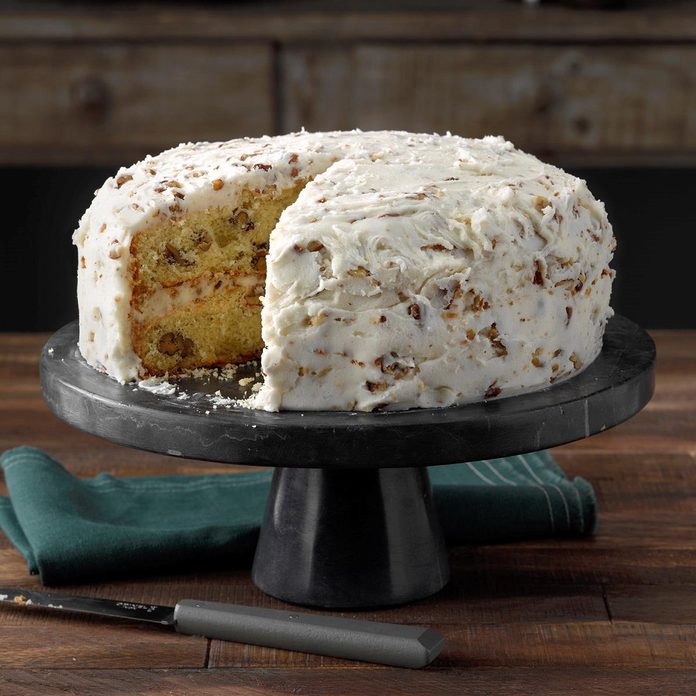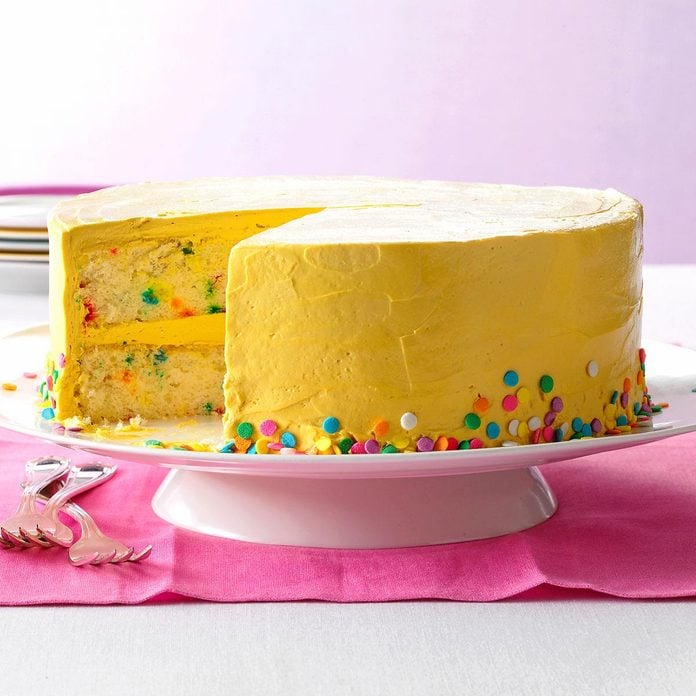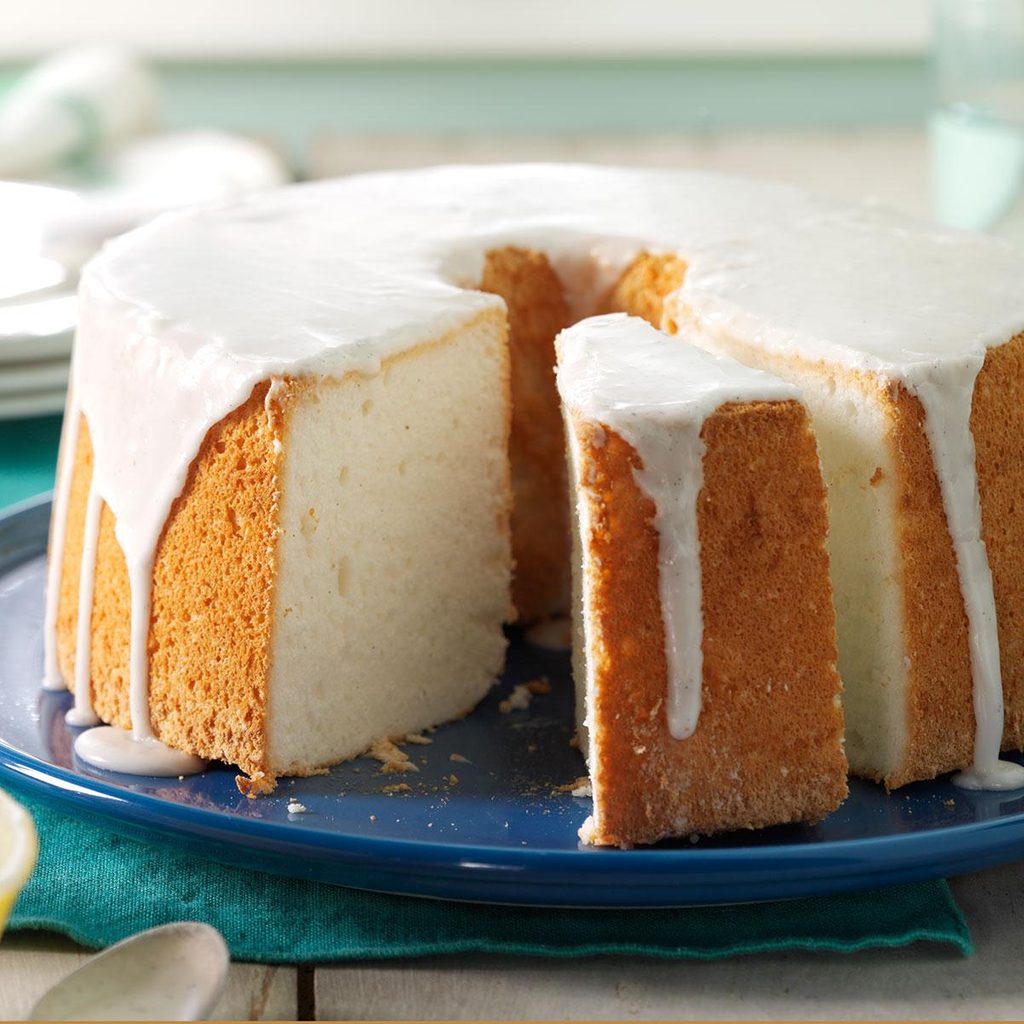It’s easy to confuse baking powder and baking soda. The powders look similar. Both often show up in the same recipe as well. Of course, baking can be a finicky process, so just think what might happen if you use the completely wrong ingredient! Knowing the difference between baking powder and baking soda is crucial for successful recipes (like these beautiful vintage-inspired cakes).
Here’s the scoop!
What is baking soda?
Baking soda, or sodium bicarbonate, is a mineral compound that, when combined with something acidic, creates carbon dioxide. (Think of those elementary school volcano experiments when you pour in the vinegar.) The carbon dioxide gas creates bubbles, which help doughs and batters rise.
Baking soda is commonly used in recipes containing acidic ingredients like buttermilk, brown sugar, yogurt, lemon juice, vinegar, cream of tartar, applesauce, natural cocoa powder, honey or molasses. Baking soda helps the finished product to rise and have a crisper texture.
It’s also a little salty tasting. Overdoing it with baking soda can result in an extra salty or even metallic-tasting bake! You only want to use enough to react with the amount of acid in the recipe, and any excess amount means there will be leftover baking soda in the recipe. That’s no good, because too much baking soda is one of the most common cake mistakes.
Instead, try putting that extra baking soda to good use cleaning around the house!
What is baking powder?
Unlike baking soda, which consists of one simple ingredient, baking powder is a mixture of baking soda and cream of tartar, a dry acid. An inactive ingredient, often cornstarch, keeps the two from reacting until liquid is added. The addition of cream of tartar adds acidity to recipes that don’t call for acidic ingredients. Also worth noting: Since baking powder is a mixture of ingredients, it’s slightly less potent, teaspoon by teaspoon, than baking soda.
When liquid is added, the baking soda and acid in the cream of tartar combine to produce carbon dioxide. Because this reaction starts right away, it’s important to bake these batters and doughs right after adding the liquid.
Most baking powders sold today are double-acting, meaning that they work once as they are added to wet ingredients and then leaven (make dough rise) again when popped in the oven and exposed to heat. Single-acting baking powders are also available but aren’t used as frequently. They activate when exposed to moisture and that’s it. You can substitute double-acting for single-acting baking powder.
Bear in mind that baking powder and baking soda can both become less effective over time, meaning if they are too old your cakes won’t get the right rise. Be sure to check the expiration dates before you start baking.
See the fascinating history behind baking powder and baking soda, along with other vintage baking facts.
Why do some recipes use both?
Some recipes call for both baking powder and baking soda. These recipes have a little bit of active acid, but the resulting carbon dioxide from the acid and the baking soda isn’t enough to leaven the volume of the batter. Baking powder is incorporated for that additional lift.
Both can be used for preserving flavor as well. For instance, if you were making fluffy pancakes, only using baking soda would neutralize the buttermilk’s acid and therefore cancel out the desired tangy flavor. Incorporating baking powder allows that slightly acidic flavor to remain, while ensuring the pancakes achieve desirable fluffiness.
Now that you know the basic difference between these two ingredient cousins, you’re destined for baking success!
Get ready to bake classic cakes from scratch
 Taste of Home
Taste of Home
If you need to learn how to make chocolate cake from scratch, this easy homemade chocolate cake recipe is a perfect place to start. It appeared on a can of Hershey's cocoa way back in 1943. I tried it, my boys liked it, and I've been making it ever since. —Betty Follas, Morgan Hill, California
Go to Recipe
If you’re not a pro and preparing a cake at home, here’s how to make box cake taste homemade!
Skillet Pineapple Upside-Down CakeFor a change of pace, you can substitute fresh or frozen peach slices for the pineapple in this old-fashioned recipe. —Bernardine Melton, Paola, Kansas
Cinnamon Coffee CakeI love the excellent texture of this easy cinnamon coffee cake recipe. Always a crowd-pleaser, its pleasing vanilla flavor enriched by sour cream may remind you of breakfast at Grandma's! Make it the night before a holiday to save time in the morning. —Eleanor Harris, Cape Coral, Florida
Lemon Pound Cake LoavesMy family always asks for this love-me-tender lemon loaf cake. Sometimes, I shake things up and make cupcakes with the batter. So awesome for brunch! —Lola Baxter, Winnebago, Minnesota
Chocolate Chiffon CakeIf you want to offer family and friends a dessert that really stands out from the rest, this is the cake to make. The beautiful high, rich sponge cake is drizzled with a succulent chocolate glaze. —Erma Fox, Memphis, Missouri
Yellow Cake with Buttercream FrostingThis is a classic scratch cake. The homemade buttery frosting and crisp, sugared edges really make it stand out. —Aria Thornton, Milwaukee, Wisconsin
Rich Rum CakeWe like a touch of rum for the holidays, and this orangy rum cake is decadent alone or with big swoops of whipped cream. —Nancy Heishman, Las Vegas, Nevada
Classic Tres Leches CakeTres leches means "three milks." This cake gets its name because it uses three kinds of milk—evaporated, condensed and cream. This tres leches cake's light and airy texture has made it a classic in Mexican kitchens for generations. —Taste of Home Test Kitchen. But if you're in a hurry, try this quick
cloud cake recipe.
Carrot CakeMy family's best carrot cake recipe dates back to my great-grandmother! We bake up a few of these carrot cakes for special occasions to make sure there's enough to go around. You'll love the texture this pretty, moist treat gets from pineapple, coconut and, of course, carrots! —Debbie Terenzini-Wilkerson, Lusby, Maryland
Best Red Velvet CakeIt's just not Christmas at our house until this festive cake appears. This is different from other red velvet cake recipes I’ve had; the icing is as light as snow. —Kathryn Davison, Charlotte, North Carolina
Kentucky Butter CakeI found this Kentucky butter cake recipe in an old cookbook I bought at a garage sale and couldn’t wait to try it. I knew it had been someone’s favorite because of the well-worn page. —Joan Gertz, Palmetto, Florida
Mama's Spice CakeWhenever I get a craving for a tasty old-fashioned treat, I make this cake. Great cooks in my family have been baking it for generations, and their families have been enjoying the wonderful spice flavor and rich frosting.
—Nancy Duty, Jacksonville, Florida
Sour Cream Pound CakeBecause I'm our town's postmaster, I can bake only in my spare time. I especially enjoy making desserts such as this one. It tastes amazing as is, or tuck it under ice cream and chocolate syrup like a hot fudge sundae! —Karen Conrad, East Troy, Wisconsin
Marvelous Marble CakePound cake and chocolate make the best marble cake. — Ellen Riley, Birmingham, Alabama
Black Forest Chocolate TorteIf you're thinking about pulling out all the stops for a dessert that says wow, look no further. This cherry-crowned beauty—stacked layers of chocolate cake and cream filling—will have everyone talking. —Doris Grotz, York, Nebraska
Hummingbird CakeThis impressive hummingbird cake is my dad’s favorite, so I always make it for his birthday. It makes a memorable dessert for any celebration and is lovely with a summer meal. —Nancy Zimmerman, Cape May Court House, New Jersey
Granny's Gingerbread Cake with Caramel SauceThe rich molasses and spice flavor of this old-time dessert is complemented with a buttery caramel sauce.—Joy Sparks, Muskegon, Michigan
Lemon Chiffon CakeThis moist, airy lemon chiffon cake was my dad's favorite. Mom revamped the original recipe to include lemons. I'm not much of a baker, but whenever I make this dessert my family is thrilled! —Trisha Kammers, Clarkston, Washington
Grandma's Carrot CakeMy grandma was very special to me. She had a big country kitchen that was full of wonderful aromas any time we visited. This was one of her prized cake recipes, and it continues to be a favorite from generation to generation. —Denise Strasz, Detroit, Michigan
Moist Chocolate CakeThis moist chocolate cake recipe with coffee reminds me of my grandmother because it was one of her specialties. I bake it often for family parties, and it always brings back fond memories. The cake is light and airy with a delicious chocolate taste. This recipe is a keeper! —Patricia Kreitz, Richland, Pennsylvania
Upside-Down FruitcakeI get tired of people bad-mouthing holiday fruitcakes. It's one of my favorite holiday flavors and I look forward to it every year. This year, I decided to combine it with everyone's favorite, upside-down cake. Try to say no to this fruitcake; I dare you! —
James Schend,
Dairy Freed
Butter Pecan CakeMy husband has a sweet tooth and I enjoy making great desserts like this cake for him! We have two farms - both of which are wonderful - but I also love being in the kitchen. I collect cookbooks and have written one myself.
Confetti Cake with Brown Sugar ButtercreamThis simple and tender cake has been celebrated in my family for years. Dressed up with tinted frosting and confetti, it becomes pure party fun. — Karen Berner, New Canaan, Connecticut
Vanilla Bean Angel Food CakeAngel food cake is everyone’s favorite blank slate for making awesome desserts. Serve it with a simple glaze or pile on fresh fruit, chocolate sauce or nutty sprinkles. —Leah Rekau, Milwaukee, Wisconsin
